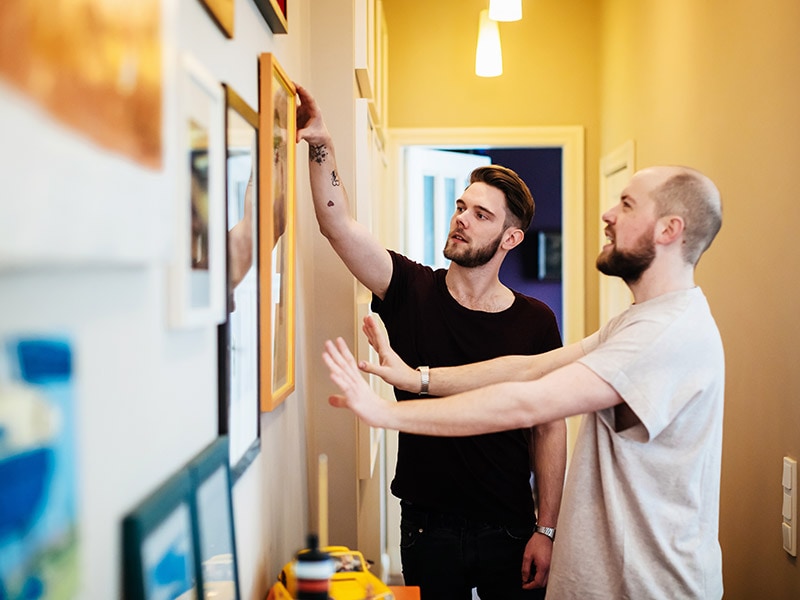STEPS TO BUYING A HOUSE
Steps to buying a house for the first time to ensure a smooth process
Buying a first home is a significant life milestone for anyone and one of the biggest investments you’ll ever make. It can be quite an undertaking, but the following steps for first time home buyers can help guide you.
Step One: Do your research so you understand the market
It doesn’t matter whether you’re buying an investment property or buying a home you want to live in forever, before you start house hunting you need to research the local market. Consider the things you want in a home, such as the type of property you want (house, unit, duplex), the proximity to schools and public transport, crime rates, and of course, price restrictions.
Get in touch with some local real estate agents to discuss your requirements and talk to mortgage brokers to see which lenders offer the best interest rate. You might even get some advice from a solicitor or conveyancer who has been working in the local industry for a while and can enlighten you on the best deals and property types. The more people you talk to, the more knowledge you’ll have about the industry and how your loan is going to work – and the better equipped you’ll be throughout the buying process.

Step Two: Work out your financials to see what you can afford
Before you start filling out a home loan application, you need to make sure you have your finances in order so you understand how much money you can afford to borrow and what you can repay, after you are approved for the loan. Take a good look at your income versus spending to determine how much you can afford to repay and remember, if your mortgage payments exceed 30% of your income, you’re likely to experience mortgage stress. Don’t include your rent in your budget but make a list of everything else you (and your partner) spend every month. This could include things like gym membership, groceries, other extra-curricular activities, school expenses for the kids, and so on. You also want to have a plan to pay off your current debt, before you get a loan. Talk to a lender and see if you can get a pre-approval amount so you know exactly how much you can borrow based on your income vs expenses.
Step Three: Find a neighbourhood where you feel comfortable and happy
If you’ve found a place you’re interested in, it’s a good idea to go for a drive through the neighbourhood to see if you like it. Find a park and have a walk around, talk to some of the locals if you’re feeling bold, and of course, check the local prices. You can find a good Home Price Guide online that allows you to see the area you’re interested in, and compare with other suburbs as well. Getting a feel for the neighbourhood and your potential neighbours before you move in can really make a big difference to how happy you’ll be when you’re living there. If the neighbours are in the same age group, with children similar ages to yours, you might feel as though you fit in and could make friends. On the other hand, if you are older and want to live a peaceful life, you can determine whether the street is noisy or busy.
Step Four: Make sure you have a deposit, and more, for initial costs
The fourth step to buying first home is again based on finances. If you’re applying for a home, you need to have a deposit. That amount could be 5%, 10% or 20% of the asking price of the house, depending on the lender and your ability to make repayments. As a general rule, you want to add another 3-5% of the purchase price as well to cover other costs like stamp duty, solicitor fees, Lenders Mortgage Insurance (if your deposit is less than 20%) and home insurance. You should also account for the cost of building inspections, pest and electrical inspections, and so on. The more you can save, the better off you’ll be. It’s important to keep in mind that you could also qualify for the First Home Buyer Assistance Scheme if this is the first house for you and your partner.
YOU SHOULD ALSO ACCOUNT FOR THE COST OF BUILDING INSPECTIONS, PEST AND ELECTRICAL INSPECTIONS, AND SO ON.
Step Five: Explore home loans for the best deals
Shop around for a home loan that gives you both lower interest rates and a variety of mortgage repayments options - that way, you can save money over the course of the loan, or you might even be able to pay it off faster. Talk to your mortgage broker to ensure you’re getting the best advice and to find a loan that accommodates your needs. Start by looking at the features you want in a home loan. Generally when you get a home loan, you can choose between two types, fixed or variable.
A fixed rate loan ensures you are making the same monthly repayments throughout the fixed term (which could be up to 10 years). Variable loans, on the other hand, go up and down with interest rates so it can change month to month. They both have good and bad features though, so make sure you understand the difference before you sign up.
TALK TO YOUR MORTGAGE BROKER TO ENSURE YOU’RE GETTING THE BEST ADVICE AND TO FIND A LOAN THAT ACCOMMODATES YOUR NEEDS.
For example, fixed rate loans can be harder to access redraw or refinance facilities if you need them; while variable loans include an offset account feature which helps reduce the amount of interest you pay. If you can’t decide between fixed and variable, you can split your loan between the two, so you have 50% variable, 50% fixed (or similar).
Ask your preferred lender about their fees and the interest rates on the loan. Fees could include application or establishment fees, property valuation and annual fees, late payment or early exit fees, redraw or discharge fees, and account-keeping fees. And keep in mind that interest rates don’t include these fees, so make sure you budget appropriately.

Step Six: Adjust your lifestyle so you don’t go off track
Owning a home is a long-term investment that continues well past the settlement date and cooling off period. If you want to commit to the long term, you might have to adjust your lifestyle a bit to ensure you have the cashflow to cover your mortgage repayments and any problems that might arise with the home itself. By planning ahead, you can take care of any additional home expenses that come your way, such as repair fees and City Council rates. Another expense you might need to take into account are strata levies (body corporate fees), which can be anywhere from $1,500 a year to $30,000 a year. While you might be able to stay a member of the gym, consider cutting back on other expenses, like take-away dinners. Managing your credit cards correctly can also assist, and instalment plans, like Plan It® can help you budget more appropriately.
Buying your first home is exciting, and if you follow the steps above, it can be rewarding as well.
MORE LIFE MOMENTS ARTICLES

LIFE MOMENTS

EXPLORE MORE
EXPLORE MORE POSSIBILITIES
CHECK OUT OUR FINANCIAL WELLBEING CONTENT
From helpful ways to get on top your Credit Card bill to simple steps to save on your weekly groceries, learn what great things you can do to help you save money.
CHECK OUT OUR TRAVEL CONTENT
From getting out of town for the day to getting away from it all for a well-earned break, see what great things you can do on your travels.
CHECK OUT OUR LIFESTYLE CONTENT
From the tastiest places to dine out to activities that keeping the kids active and happy over the holidays, discover what great things you can do day in, day out.
- Plan ItTM
- You can create an Instalment Plan as long as your account is in good standing. We may limit the amount that can be transferred to an Instalment Plan.
- Each Instalment Plan will begin from the date it is successfully created, as communicated to you in your Online Account.
- Payment of your first Monthly Instalment will be due in your next payment cycle.
- You will be charged a Monthly Plan Fee for each Instalment Plan created.
- This fee will be charged each month your Instalment Plan is active and will be notified to you before you create the Instalment Plan.
- View the full Plan ItTM Instalment Terms and Conditions here







